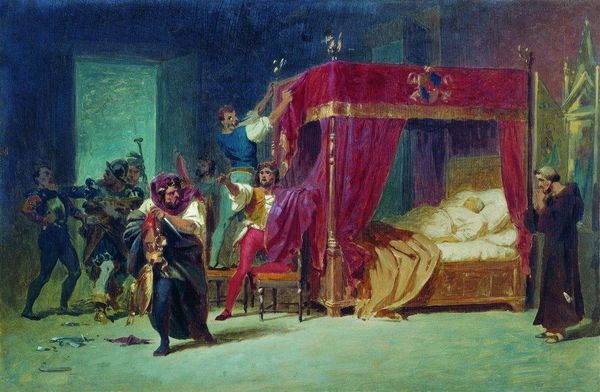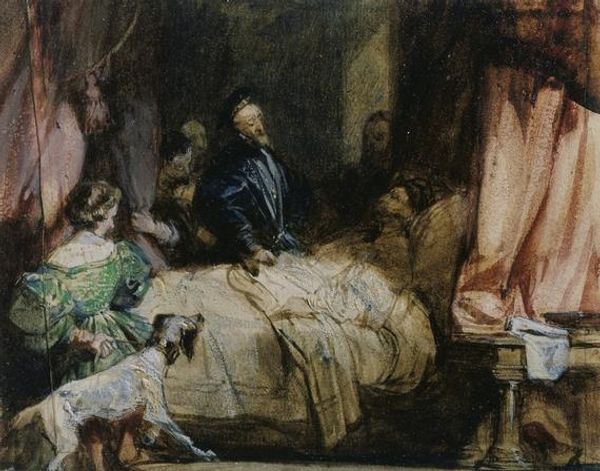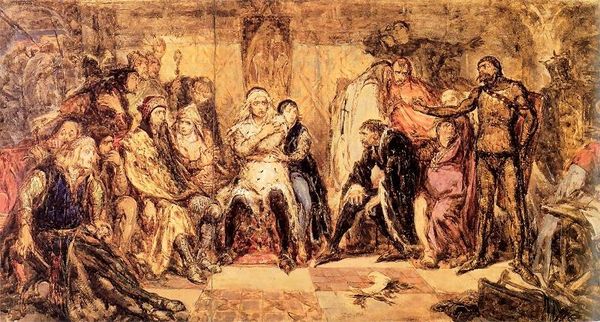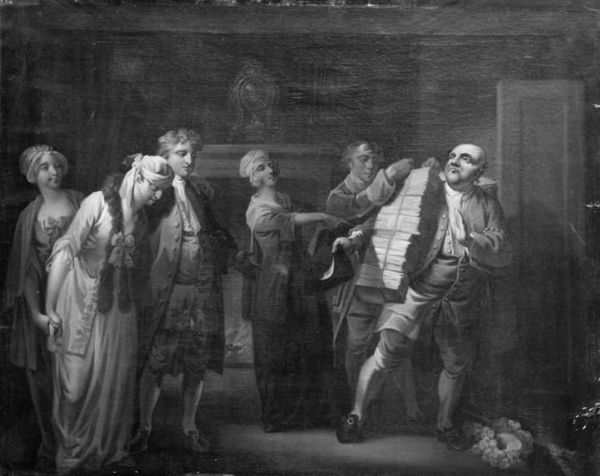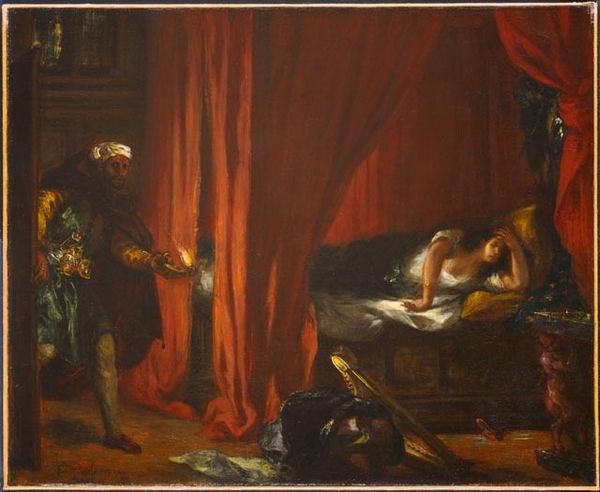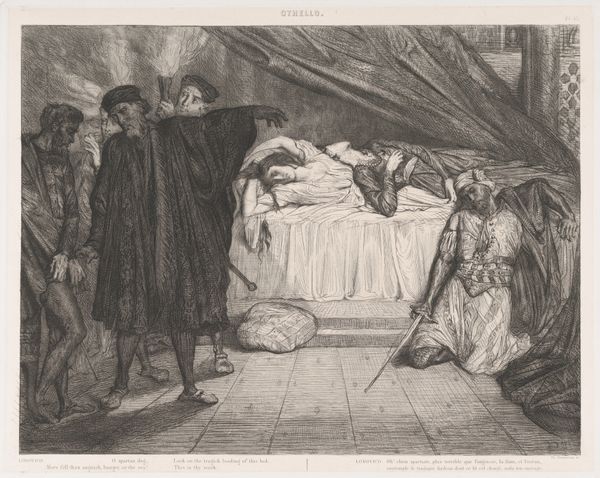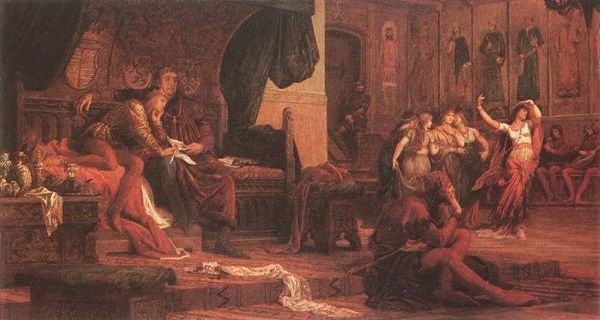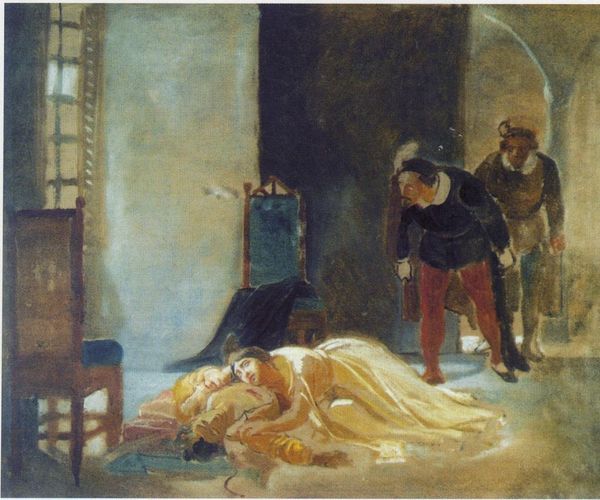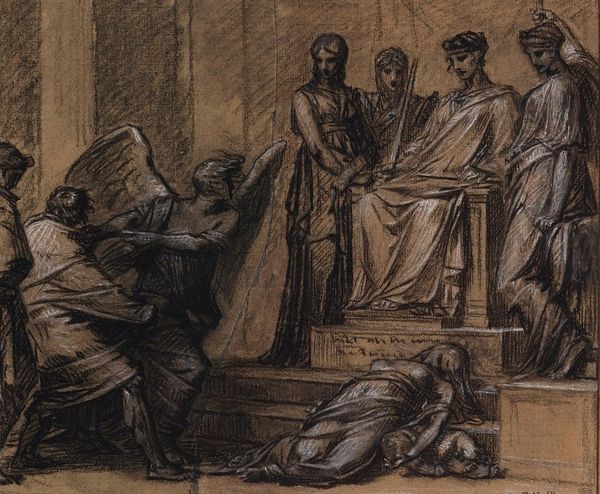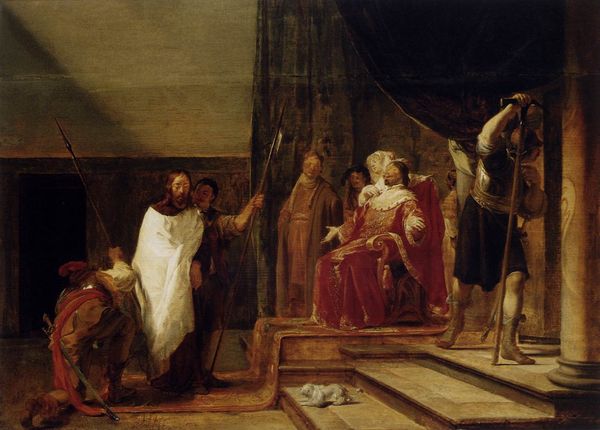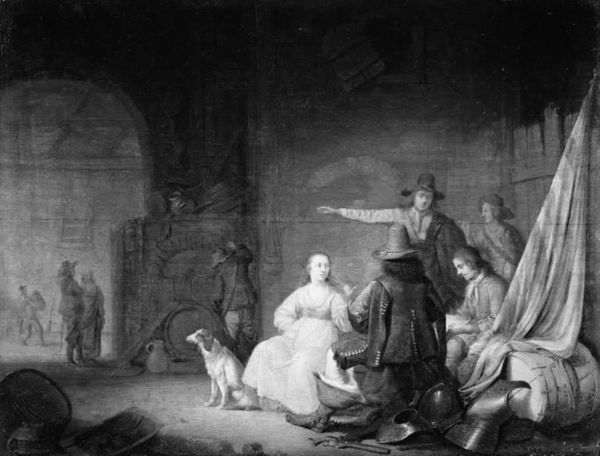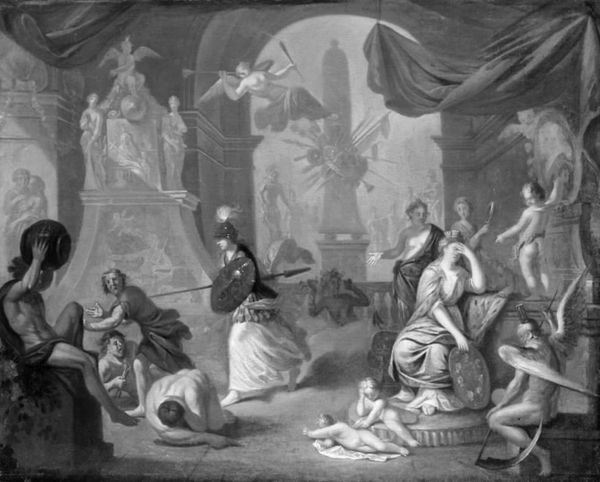
Copyright: Public domain
Curator: Bronnikov's painting, created in 1866, offers a window into a particular historical moment, depicting "Mosaicists before the court three in Venice." Editor: The mood is immediately intriguing. The stark contrast between the figures cloaked in shadow on the left, and the vividly dressed individuals on the right really heightens the drama. Curator: Indeed. Bronnikov positions us within a clear narrative context. This genre painting situates art, mosaic making specifically, within the framework of legal authority and perhaps societal judgment. The three robed figures are rendered in formal tones and seem to form the court. Editor: Structurally, observe how the central table, draped in an ambiguous greenish fabric, becomes a dividing line, separating these two visual, and perhaps moral, worlds. This choice lends the composition a quality of heightened tension, one might say a formal tension. It’s difficult to ascertain any detail beyond it. Curator: That division might reflect the actual power dynamics present in Venice. Consider that this canvas offers a vision of civic life where artistic labor isn't just an act of creation but an engagement with legal and perhaps mercantile systems of power. The composition presents art, not as purely aesthetic or divine, but inextricably tied to earthly forces. Editor: Right. The materiality of paint also suggests at a subtle critique. The stark brushstrokes almost give a staged-theatrical feel that plays with this perception of “official” and “unofficial” business. And in turn, it reinforces the artwork as representation—one level removed from what may have occurred. Curator: One can almost hear echoes of larger cultural debates surrounding the role of art in society. Bronnikov captures that inflection point masterfully, making 'Mosaicists Before the Court' not just a visual piece but an historical document and reflection on Romantic values, offering insight into Venice and 19th-century cultural ideals. Editor: Agreed. It is interesting to consider how this artwork invites us to question art's standing both within and without social institutions. Curator: I'd concur. There is much for us to contemplate and appreciate as we engage with its many fascinating visual elements.
Comments
No comments
Be the first to comment and join the conversation on the ultimate creative platform.

